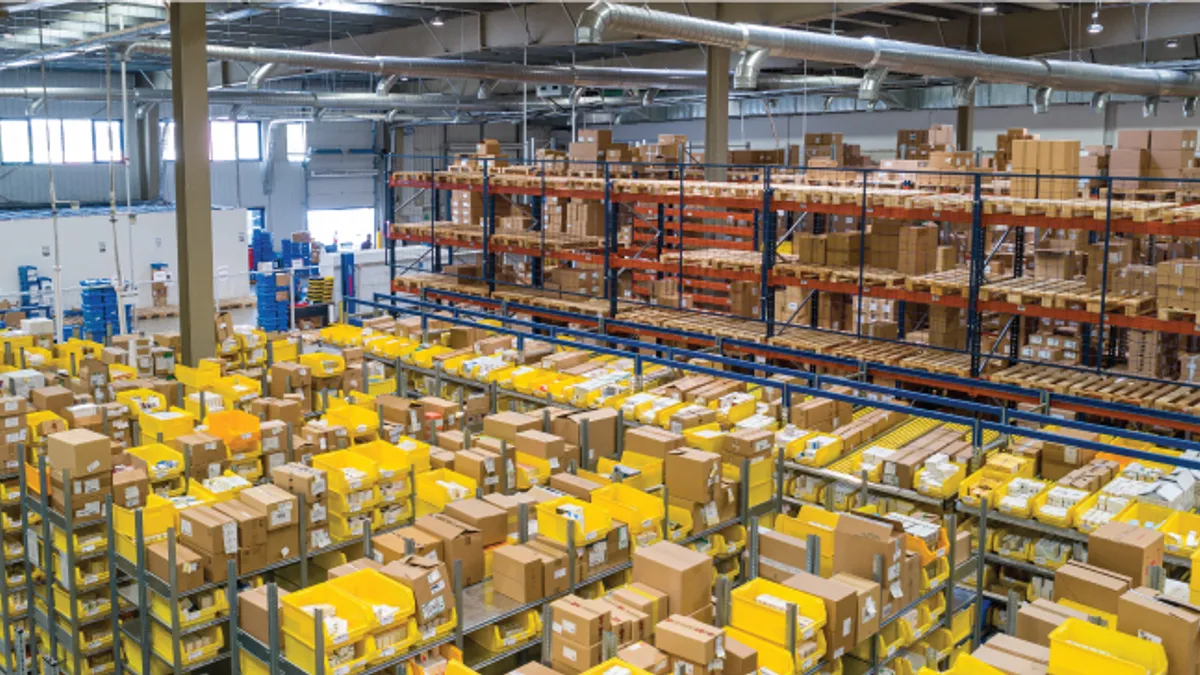As warehousing costs continue to grow due to increasingly complex warehousing scenarios, the cost of fixed infrastructure must be scrutinized for its inability to flexibly cope with fluctuations in demand, labor shortages, higher rental costs for space, and risk.
Off-peak season cost & fixed infrastructure
In the US, retailers generally experience an annual peak in business in November and December with companies claiming a 50%-to-100% increase in operations and others stating 75% of an entire year's revenue to be generated in this period. To handle these two months of heightened demand and logistical gymnastics, companies prepare by building warehouse facilities months in advance.
This kind of building for peak seasons brings a financial obligation that sees no rewards for 10 months out of the year. It implies 12 months of expenses for electricity, maintenance, upfront capital expenditure, and rental costs. Similarly, some may have to keep excessive labor for periods longer than necessary to secure skilled workers for operating equipment under these short periods of high demand.
Labor-intensive infrastructure & low-density storage
Fixed infrastructure costs in the warehouse drive many other associated costs and they must be accounted for. For example, conveyor belts require many people on-hand to secure consistent throughput and should be considered a labor-intensive technology with a high total cost. To guarantee efficient operations, conveyor belts require workers to:
-
Ensure labels are faced correctly
-
Prevent jams
-
Manage damaged items
-
Support additional routes for non-conveyable items
Similarly, fixed infrastructure impacts space utilization and storage capacity by being nonmodular. As the rise of e-commerce and same-day delivery services continue to drive the demand for warehouse space closer to urban areas, it generates higher prices of industrial real estate, making low-density storage and wasted space an increasingly costly solution.
Cost of downtime & single-point-of-failure
Fixed infrastructure may also lead to expensive scenarios of closed large-scale operations and downtime due to single-point-of-failures. A gridlock caused by full lines on conveyors, excess recirculation or broken sensors, lead to high costs for lost throughput as well as the equipment and skilled labor needed to troubleshoot. Moreover, tagout or lockout procedures require additional downtime to prevent accidental or unauthorized access to equipment undergoing maintenance. Downtime is known to hurt businesses that depend on perfect orders and fast deliveries to remain competitive.
The solution
Geek+ provides robotics solutions that solve the above-mentioned issues. By combining AI-driven Autonomous Mobile Robots (AMRs) and intelligent software, Geek+ provides customized solutions that support businesses with the flexibility needed for de-risking operations. The software can easily adopt new product mixes to mitigate fluctuating demand, and in terms of scalability, one only has to adjust the number of AMRs, workstations, and added hours to the day while the human factor remains unchanged. In turn, the systems enable businesses to avoid many of the costs associated with labor shortages, and avoid building for peak and having to invest in expensive and fixed infrastructure to meet underlying growth demands.
Geek+ robotics solutions mitigate risk. AMRs are interconnected through the Geek+ robot management system and move autonomously. If a robot stops working, spare robots onsite come to action and deploy, thus avoiding risks for single-point-of-failure, widespread disruptions, and long downtime. Lastly, AMRs enable social distancing and lessen the risks for infection.
Geek+ and Nike introduce same-day delivery to Japan
In February 2020 – Geek+ empowered Nike with smart solutions enabling same-day delivery in Japan. By deploying more than 200 robots from its goods-to-person P series line, Geek+ was able to help Nike mitigate labor shortages and high labor wages while enabling the company to meet the rapid growth in their e-commerce sales and high expectations for same-day delivery.






